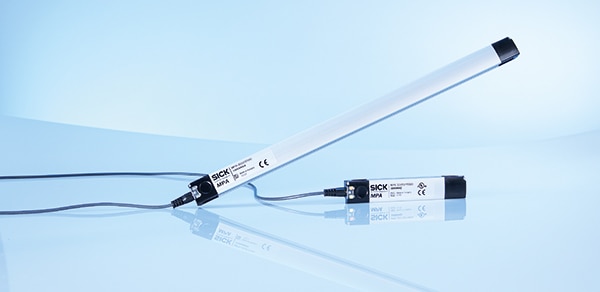The new MPA from SICK is the versatile solution for linear distance measurement and position detection of pistons in pneumatic drives. The analog positioning sensor delivers convincing performance due to, among other things, its selectable analog output, the setting of the measuring range by means of teach-in, as well as communication via IO-Link.
The MPA is available with measuring ranges from 107 mm to 1,007 mm, each graded in 36-mm increments and featuring minimized blind zones. Whether roundbody cylinders, tie-rod or integrated profile cylinders or even T-slots: Because of its universal housing, it can be mounted on the most diverse cylinder types using the suitable fastening adaptors. The scanning rate of 1.15 ms shows just how fast the MPA is, with resolution at a very good value of 0.03 % of the measuring range.
Easily mounted and universally applicable
Electric integration of the MPA is just as simple as mechanical installation. The initial and final point of the measuring range is taught in by means of an intelligent, capacitive teach pad. In addition, the magnetic cylinder sensor provides an integrated IO-Link interface as a communication option. Commissioning and diagnosis are supported in a time-saving way by means of a four-color LED display on the sensor. The analog output of the MPA can be used optionally as a 4 to 20-mA current signal or as a 0 to 10-V voltage signal, reducing the variety of variants for machine builders and thus their storage costs.
Designed for a long service life
The MPA is designed for a long service life and the lowest possible maintenance costs, even in harsh environments. The aluminum housing features an IP 67 enclosure rating. In conjunction with the rugged control panel and the integrated cable kink protection, the result is a maximum degree of ruggedness and load capacity. This guarantees utmost availability in the most diverse applications, e.g. for monitoring offsets, for checking levels with float-controlled magnets, or for linear distance measurement using separate position sensors.
- Product information: MPA analog positioning sensor
- Product portfolio: Analog positioning sensors


